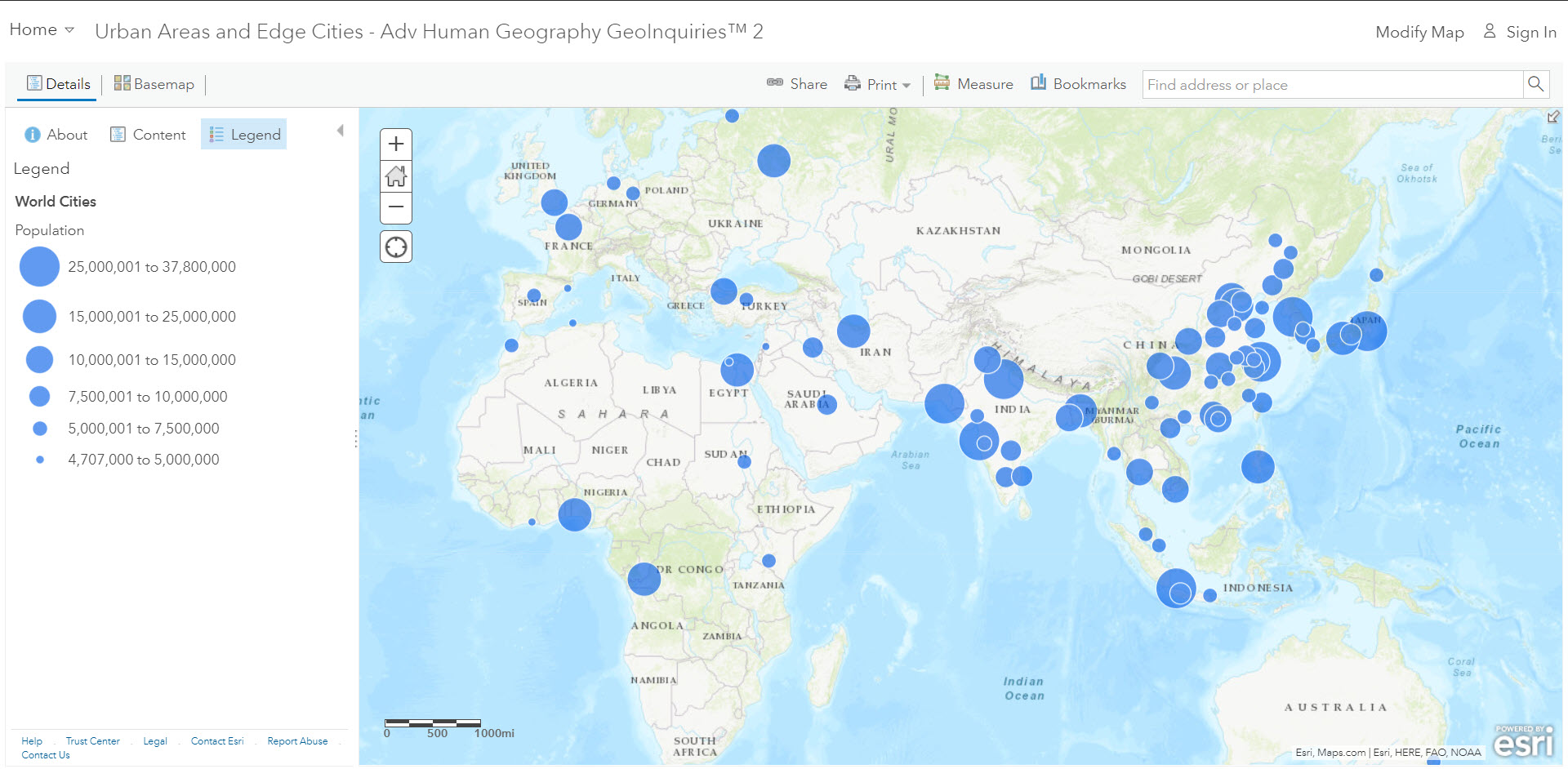What characteristics define a city?
Louis Wirth defined a city to have defining characteristics that included a large population, size, a heterogeneous nature, and a defined boundary. A city is identified by businesses, population, and a unique cultural landscape. Urban locations include non-rural areas like a city and the surrounding suburbs. Major characteristics of cities include having downtown areas, buildings, highways, and other transportation networks.
Businesses, a large population, and a unique cultural landscape identify a city, whereas urban locations include non-rural areas like the city and suburbs. Common characteristics of significant cities include having a downtown area, large buildings, and a highway and transportation network.
What are some examples of cities?
Step 1: Go to the ArcGIS Online map, Urban Areas and Edge Cities, and explore the map.
Step 2: With the Details button underlined, click the button, Show Contents of Map (Content).
Social scientist, Louis Wirth, identified a city as having the following characteristics: large population, geographic size, a heterogeneous nature, and defined boundaries.
Step 3: Click the checkbox to the left of the layer name, USA Major Cities.
- What are some major cities in the United States?
Step 4: Zoom in and out to identify and view some of these cities.
Step 5: Turn on the layer, World Urban Areas.
- What are some major world cities?
What factors have led to the urban growth of cities?
Step 6: Zoom to the United States.
Step 7: Turn on the layer, Population Density – Counties.
- What connections are evident between population distribution and significant cities.
Step 8: Turn off the layer, Population Density – Counties.
Step 9: Turn off all layers to see the basemap, World Street Map.
Step 10: Zoom to a city of interest.
- Why might cities grow at different rates?
- Why do other nearby cities often surround major cities?
How have edge cities changed the physical and cultural landscape?
Step 11: Use the search box, above and right of the map. Search for Washington, D.C.
- What are some examples of edge cities that have emerged in the area?
Step 12: Zoom in to Washington, D.C., and observe the land use patterns.
- What characteristics identify these as edge cities?
- What is the next stage of growth for these edge cities and surrounding suburbs?
What is the future of urban growth?
- How are urban growth changing cities around the world?
- How have residential and commercial areas changed the urban landscape?
- How is urban growth changing the areas adjacent to cities?

